Pistachio Macarons
4.5
(36)
Your folders
Your folders
Cook Time: 18 minutes
Total: 80 minutes
Servings: 20
Cost: $1.88 /serving
Author : Shinee
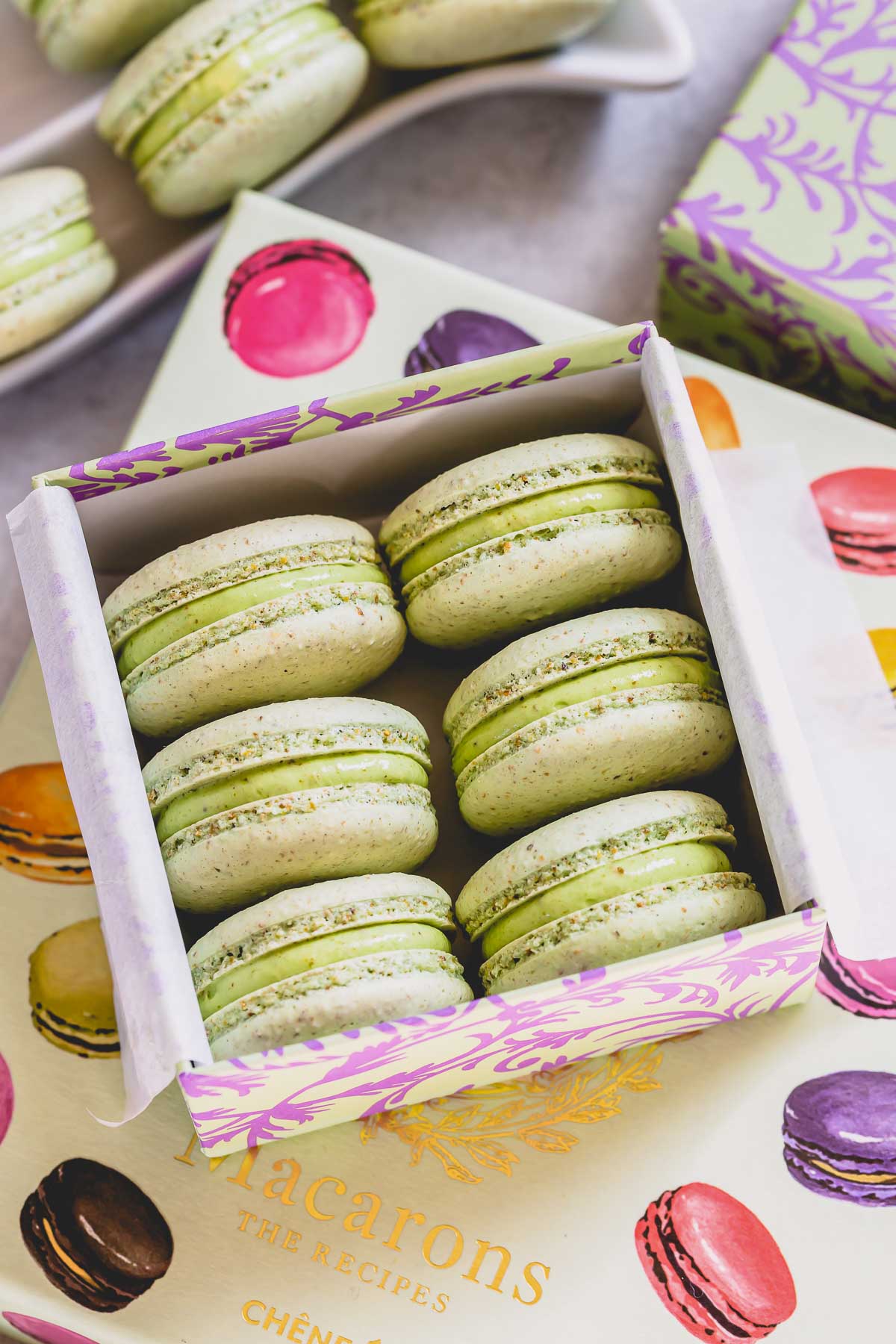
Ingredients
Export 7 ingredients for grocery delivery
Instructions
Step 1
Line 2 baking sheets with parchment paper or teflon sheet. (TIP: For even air circulation, flip the baking sheets upside down.)
Step 2
To prepare the dry ingredients, sift together almond flour, pistachio flour and powdered sugar twice. (TIP: If you have up to 1 tablespoon of chunky dry ingredients left in the sifter, you don't have to replace it. Simply discard those chunky bits.)
Step 3
To make the meringue, in a clean mixing bowl with a whisk attachment, beat the egg whites on medium low speed until foamy. (I set it to speed 2 or 4 on my KitchenAid stand mixer.)
Step 4
When egg whites are foamy, add cream of tartar and salt and continue to whisk.
Step 5
Then slowly add sugar one tablespoon at a time, while mixer is still running. Allow the sugar to dissolve after each addition.
Step 6
When the meringue reaches soft peaks, add a drop of green gel food coloring. (I used Wilton Leaf Green or Americolor Green.)
Step 7
Continue beating the egg whites on the same medium low speed until hard peaks form. Visual cues: Meringue should ball up inside the whisk, and when you lift the whisk, the meringue should hold a pointy end and have sharp ribs. (Watch my Meringue 101 video for more tips.)
Step 8
To make the batter, sift the dry ingredients again into the meringue. And using a silicone spatula, fold the dry ingredients into the meringue until fully incorporated. Then continue to fold the batter until it’s runny enough to draw a figure eight.
Step 9
To test the batter, take a small amount of batter and drop it into the bowl. If the small peaks dissolve into the batter on its own in about 10 seconds, the batter is ready. If not, fold couple more times and test again. Be careful not to over-fold the batter. (TIP: Making french macarons is all about the technique. This is one of the most crucial steps. Let me try to describe the folding motion as best as I can: run the spatula clockwise from the bottom, up around the sides and cut the batter in half. If you’re beginner macaron-baker, I suggest to count every fold. It takes roughly about 50 folds to reach the proper consistency. After 50 folds, start testing the batter, and continue testing after every couple folds. Watch my real-time macaronage video.)
Step 10
To pipe macaron shells, transfer the macaron batter into a pastry bag, fitted with a round tip. (I used this Wilton 2A tip.)
Step 11
Hold the pastry bag at straight 90° angle and pipe about 1.5-inch rounds about an inch apart on prepared baking sheets. (TIP: I made a perfect macaron template for you. Simply pipe the batter to fill inner circle.)
Step 12
Tap the baking sheets firmly on the counter (or using your hand) a few times to get rid of any air bubbles. You can also use a toothpick to burst some large air bubbles. This step ensures smooth tops.
Step 13
Let the macarons sit out on the counter for at least 15-30 minutes, maybe up to couple hours, depending on humidity. When you lightly touch the macarons and the batter does not stick to your finger, then it’s ready to go into the oven.
Step 14
Meanwhile, preheat the oven to 300°F (150°C). (Note: Make sure to preheat your oven for at least 30 minutes. I don't use convection settings. I set my oven to heat from top and bottom.)
Step 15
To bake, working one baking sheet at a time, place one tray with macarons on the middle rack. (TIP: To prevent browning, place an empty baking sheet on top rack to shield the heat.) Bake for about 15-18 minutes. It’ll take longer for larger macarons.
Step 16
To test for doneness, touch one macaron lightly and try to move it. If it slides and wobbles, bake a minute or so longer. The cooked macarons should be firm to touch and the base shouldn’t move. (TIP: It’s always better to slightly over-bake macarons than under-bake them!)
Step 17
Cool the macarons completely on the baking mats before peeling them off.
Step 18
In a small saucepan, combine sugar and water. Bring it to a boil over medium heat, stirring it constantly until sugar is completely dissolved. Then continue to cook until the syrup reaches 250°F (120°C), about 5 minutes.
Step 19
Simultaneously, start beating egg yolks in a mixing bowl with whisk attachment until it's doubled in size and becomes pale in color, about 2 minutes.
Step 20
While the mixer is running on low speed, slowly pour the hot syrup into the egg yolks. Pour the syrup into the side of the bowl, instead of the whisk, so that it doesn't splatter.
Step 21
Increase the speed to medium high, and beat the mixture until it cools down to 104°F (40°C). The mixture will become smooth and white.
Step 22
Stir in butter, pistachio paste and food coloring, if desired. Continue to beat the cream until nice and smooth. Then transfer the buttercream into a pastry bag with round tip.
Step 23
To assemble macarons, pair the macaron shells by size and arrange them on a wire rack. Line them up so that bottom shells are upside down.
Step 24
Pipe a dollop of filling on bottom shells. Place the top shell over the filling and press lightly so the filling spreads till the edges.
Step 25
Store the filled macarons in an airtight container in the fridge for at least 24 hours to mature, which allows the filling to soften and flavor the shells.
Step 26
To serve, bring the macarons out about 30 minutes prior to serving.
Top similar recipes
Curated for youYour folders
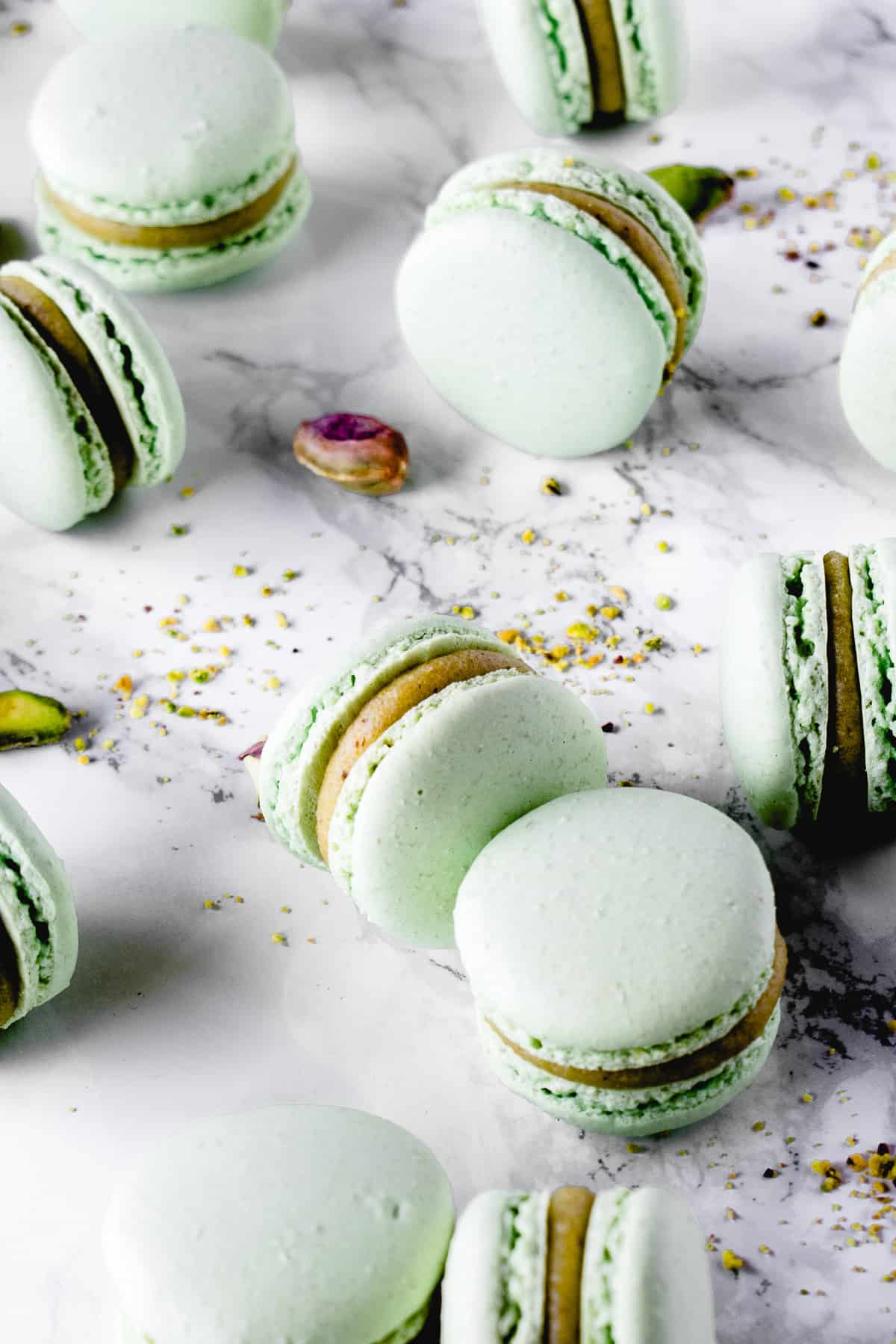
 776 views
776 viewsPistachio Macarons
anasbakingchronicles.com
4.7
(101)
17 minutes
Your folders

 838 views
838 viewsPistachio Macarons
houseofnasheats.com
4.6
(15)
16 minutes
Your folders

 224 views
224 viewsPistachio Macarons with White Choco...
barleyandsage.com
5.0
(64)
15 minutes
Your folders

 439 views
439 viewsMacarons
bbcgoodfood.com
14 minutes
Your folders
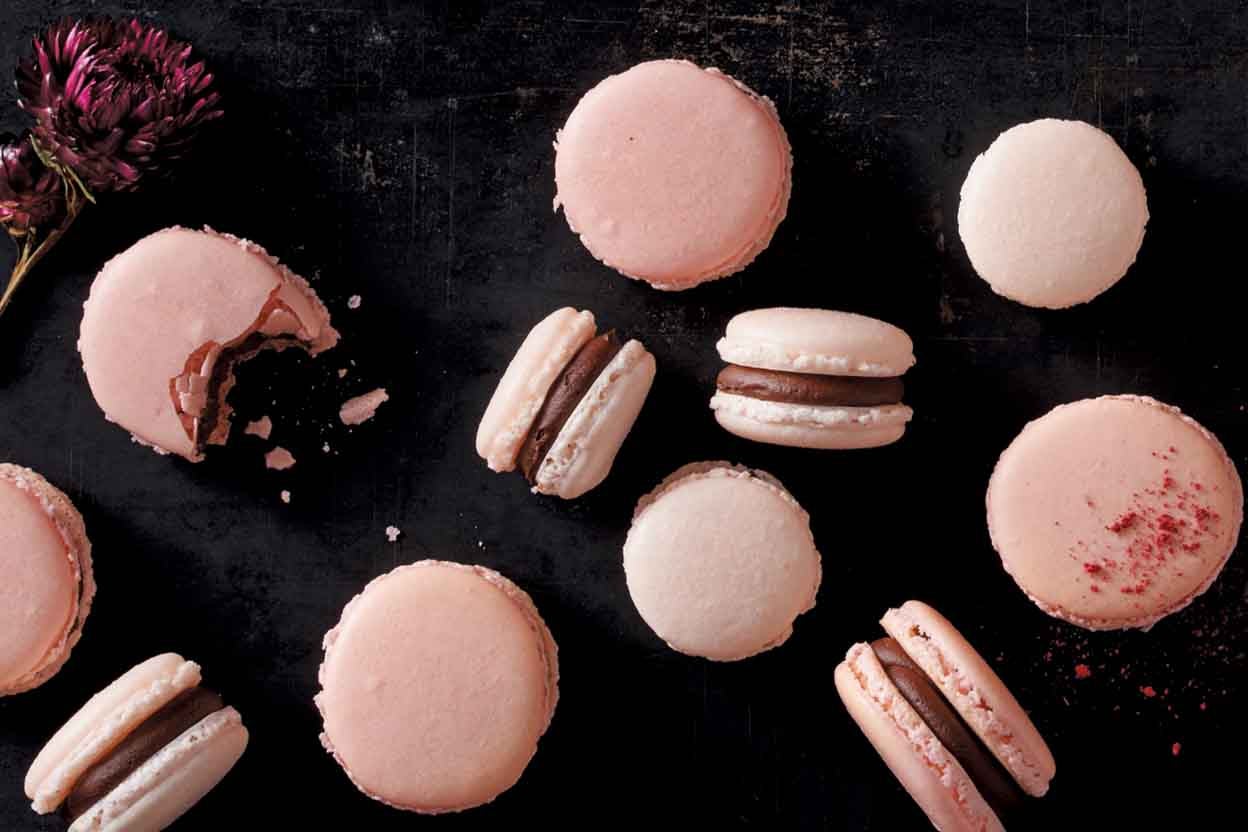
 272 views
272 viewsMacarons
kingarthurbaking.com
4.2
(65)
30 minutes
Your folders
 259 views
259 viewsMacarons
foodnetwork.com
4.0
(29)
15 minutes
Your folders
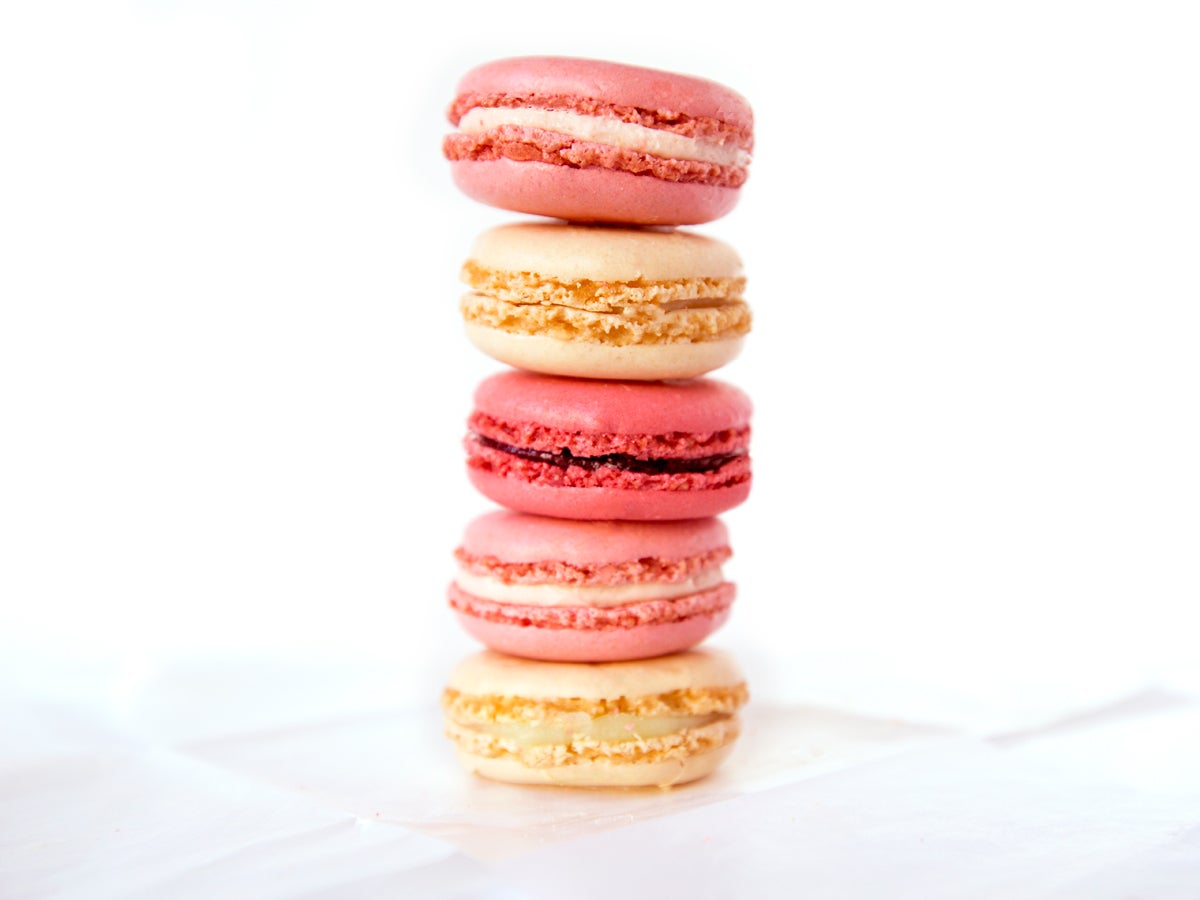
 396 views
396 viewsMacarons
saveur.com
Your folders

 394 views
394 viewsMacarons
cooking.nytimes.com
4.0
(395)
Your folders
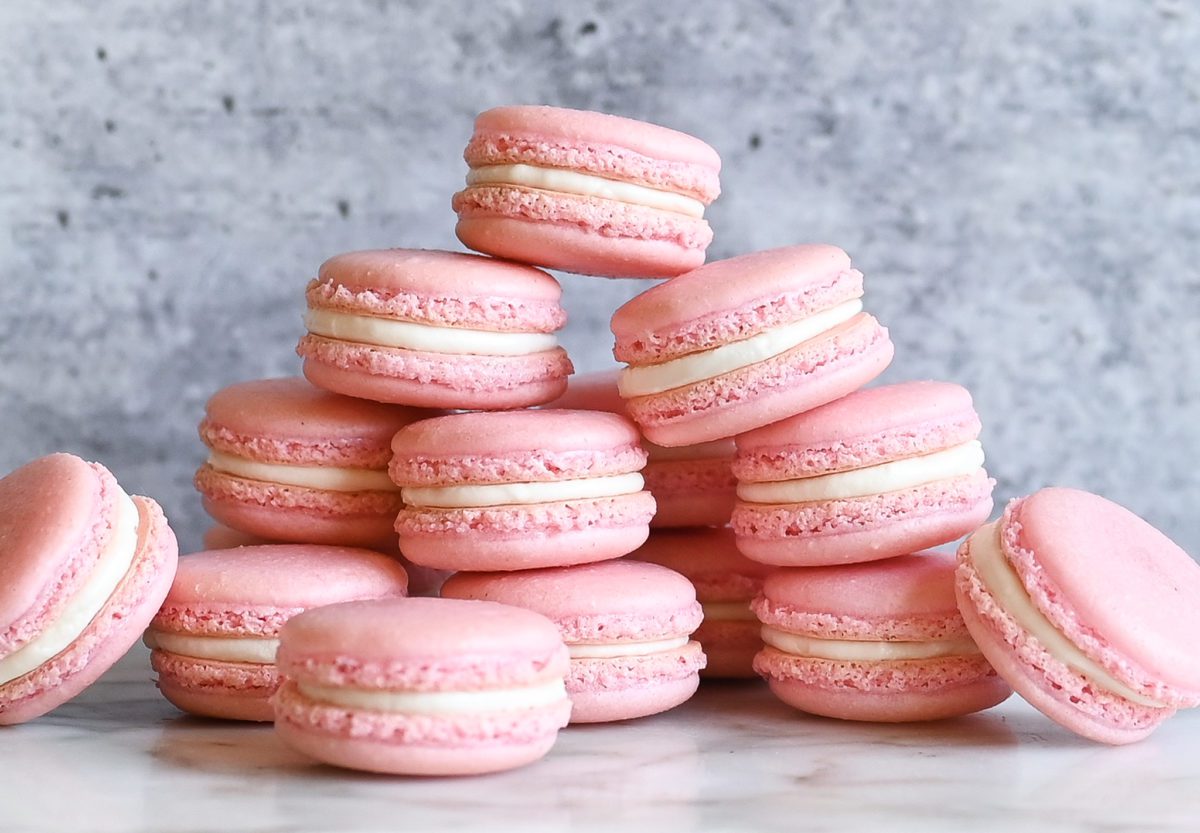
 357 views
357 viewsMacarons
onceuponachef.com
5.0
(3)
15 minutes
Your folders
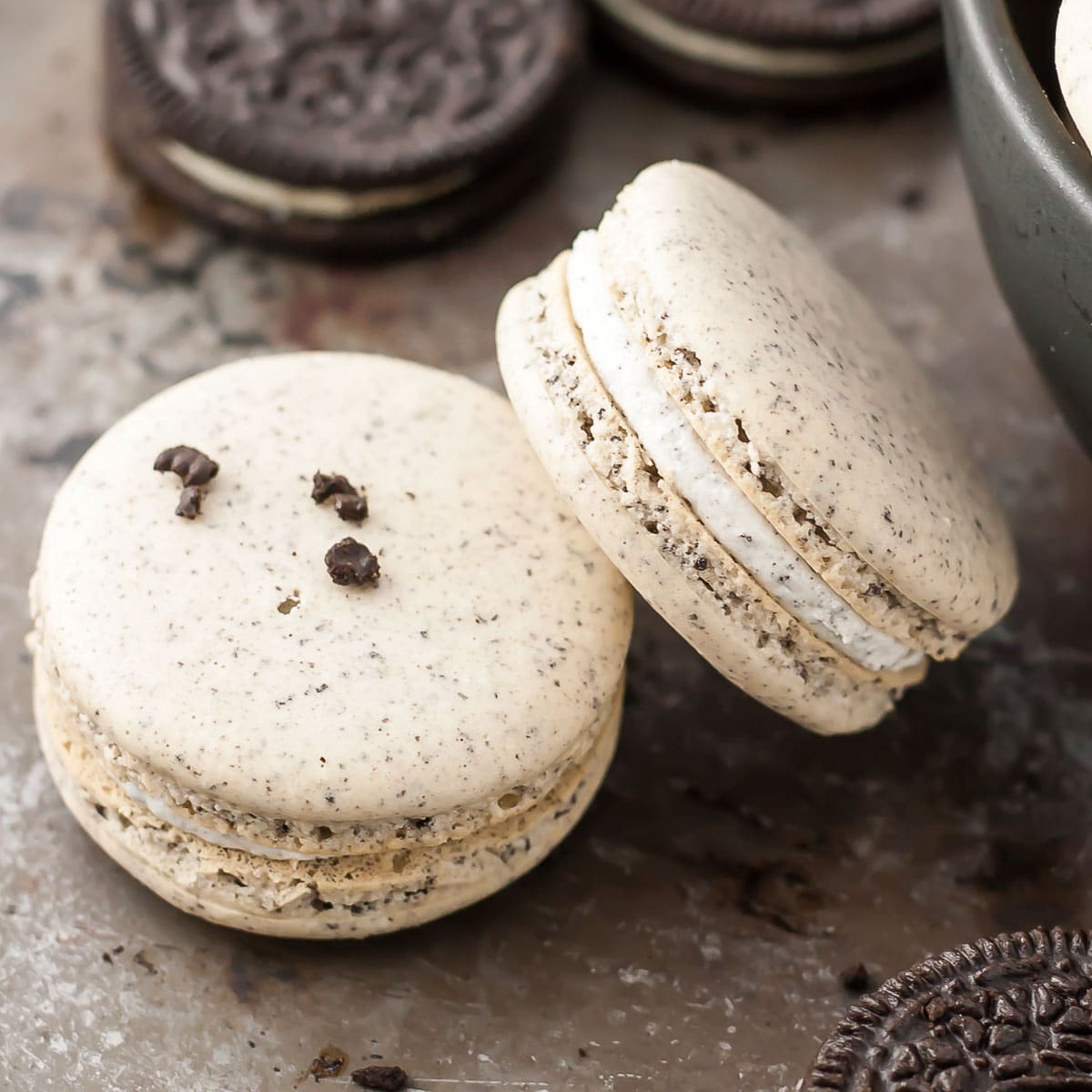
 428 views
428 viewsOreo Macarons (French Macarons)
livforcake.com
4.9
(41)
15 minutes
Your folders
 60 views
60 viewsOreo Macarons (French Macarons)
livforcake.com
Your folders
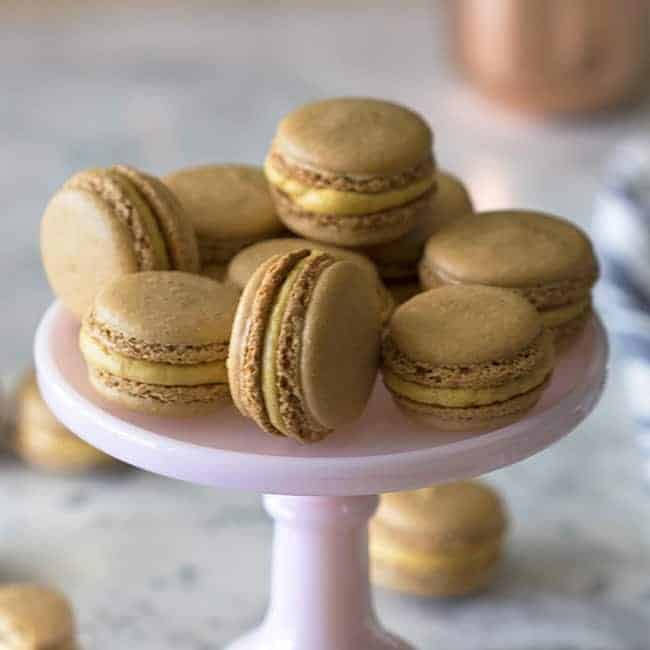
 390 views
390 viewsPumpkin Macarons
preppykitchen.com
5.0
(46)
20 minutes
Your folders

 390 views
390 viewsRaspberry Macarons
houseofnasheats.com
4.7
(21)
16 minutes
Your folders
 99 views
99 viewsFrench Macarons
filcanbites.com
30 minutes
Your folders

 399 views
399 viewsCoffee Macarons
thespicetrain.com
70 minutes
Your folders

 325 views
325 viewsPeppermint Macarons
houseofnasheats.com
4.6
(19)
15 minutes
Your folders
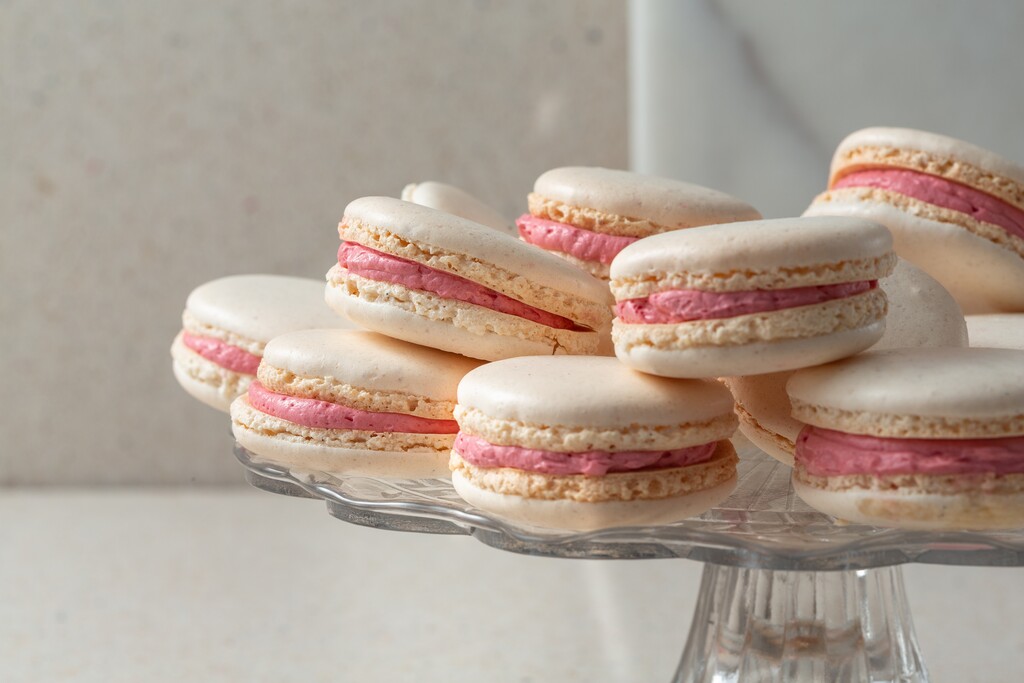
 321 views
321 viewsFrambozen-macarons
24kitchen.nl
2.7
(104)
Your folders

 660 views
660 viewsFrench Macarons
chelsweets.com
4.7
(36)
16 minutes
Your folders

 792 views
792 viewsItalian Macarons
chelsweets.com
4.7
(12)
12 minutes